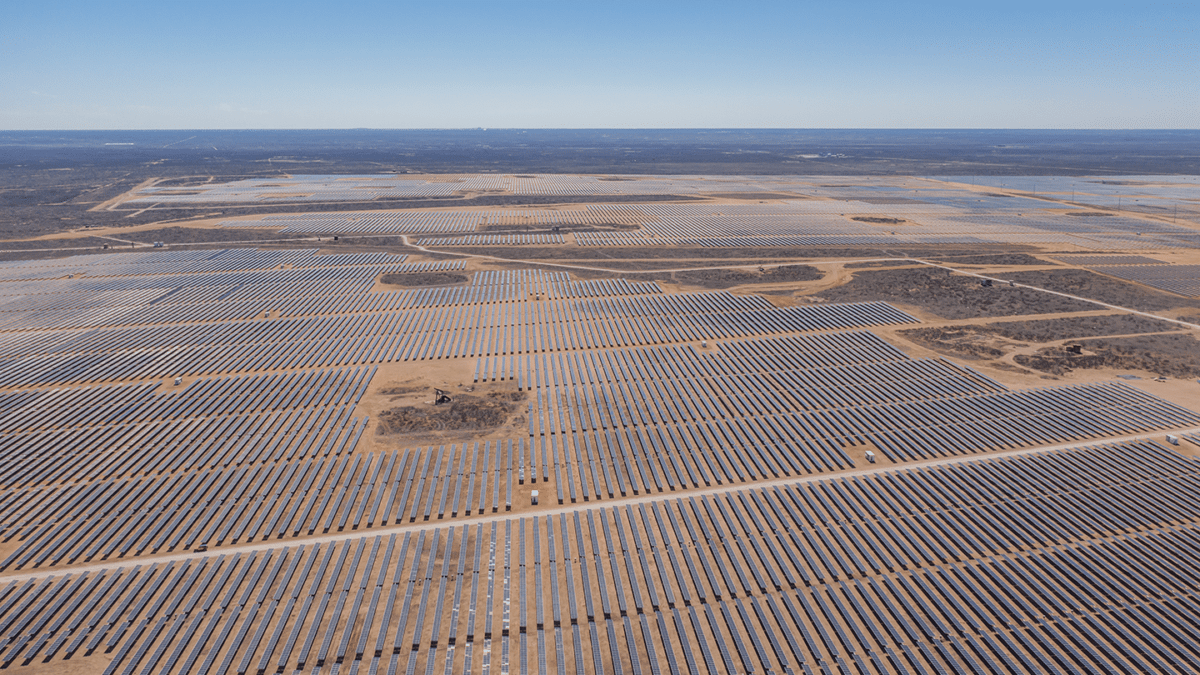Ørsted, a utility-scale renewable energy developer with a large footprint in Texas, announced it will break ground this month on the 471 MW Mockingbird solar center. The project is Ørsted’s largest solar facility and ranks seventh on PV Intel’s largest projects to begin construction within the last year.
The facility is expected to produce the equivalent of 80,000 Texas homes’ electricity demand, interconnecting with Texas utility Oncor. The project will create at least 200 jobs during construction and will require long-term staffing for operations and maintenance. Project construction is slated for January 2023 and is expected to be completed in 2024.
The project will inject an estimated $215 million new revenue into the tax base, promoting local economic development in Lamar County, and providing long-term financial support for North Lamar and Chisum Independent School Districts.
As part of the project, Ørsted announced it is collaborating with The Nature Conservancy (TNC) to protect nearly 1,000 acres of native tallgrass prairies in Texas. The company will purchase and transfer the land to TNC this year. Less than one percent of the original tallgrass prairies of Texas remain today, and less than five percent has survived nationwide. The collaboration will mark the largest conservation of tallgrass prairies on record. The Mockingbird project will occupy 4,900 acres, which stretches into the Smiley-Woodfin Native prairie grassland, the largest contiguous remnant of a rare and threatened type of native prairie found in only a few counties in north Texas.

Image: Ørsted
“We need to deliver green energy for this generation while protecting natural habitats for the next,” said Daniel Willard, biodiversity specialist, Ørsted. “Drawing on both internal expertise and outside guidance, we will continue to look for opportunities to protect the prairie and ensure that native plants and pollinators thrive.”
The transaction is part of the solar developer’s stated goal of being net-positive to biodiversity by 2030. Ørsted’s global biodiversity platform includes programs that range from regrowing coral and monitoring crustacean habitat, to seagrass restoration and oyster reintroduction.
Ørsted has a total U.S. land-based capacity of 5 GW across wind, solar and storage resources. The company was the first to develop offshore wind in the United States, and has a 5 GW active offshore wind development pipeline.
No state has more solar capacity on the way than Texas in the coming years. The Energy Information Administration (EIA) projects as much as 36 GW of solar capacity will be added in the next five years, adding on to the 16 GW installed thus far and leapfrogging the Lone Star State over California in terms of installed capacity.
To date, the state has enough solar capacity to power the equivalent of nearly 2 million homes. Over 10,000 Texans are employed by the solar industry, and the Solar Energy Industries Association (SEIA) reports that over $19 billion has been invested in the technology through Q3 2022. Nearly 5% of Texas electricity is generated by PV. Most of this capacity is being built at the utility-scale, with a large band of projects occupying the drier, sunnier western half of the state.
This content is protected by copyright and may not be reused. If you want to cooperate with us and would like to reuse some of our content, please contact: editors@pv-magazine.com.









By submitting this form you agree to pv magazine using your data for the purposes of publishing your comment.
Your personal data will only be disclosed or otherwise transmitted to third parties for the purposes of spam filtering or if this is necessary for technical maintenance of the website. Any other transfer to third parties will not take place unless this is justified on the basis of applicable data protection regulations or if pv magazine is legally obliged to do so.
You may revoke this consent at any time with effect for the future, in which case your personal data will be deleted immediately. Otherwise, your data will be deleted if pv magazine has processed your request or the purpose of data storage is fulfilled.
Further information on data privacy can be found in our Data Protection Policy.